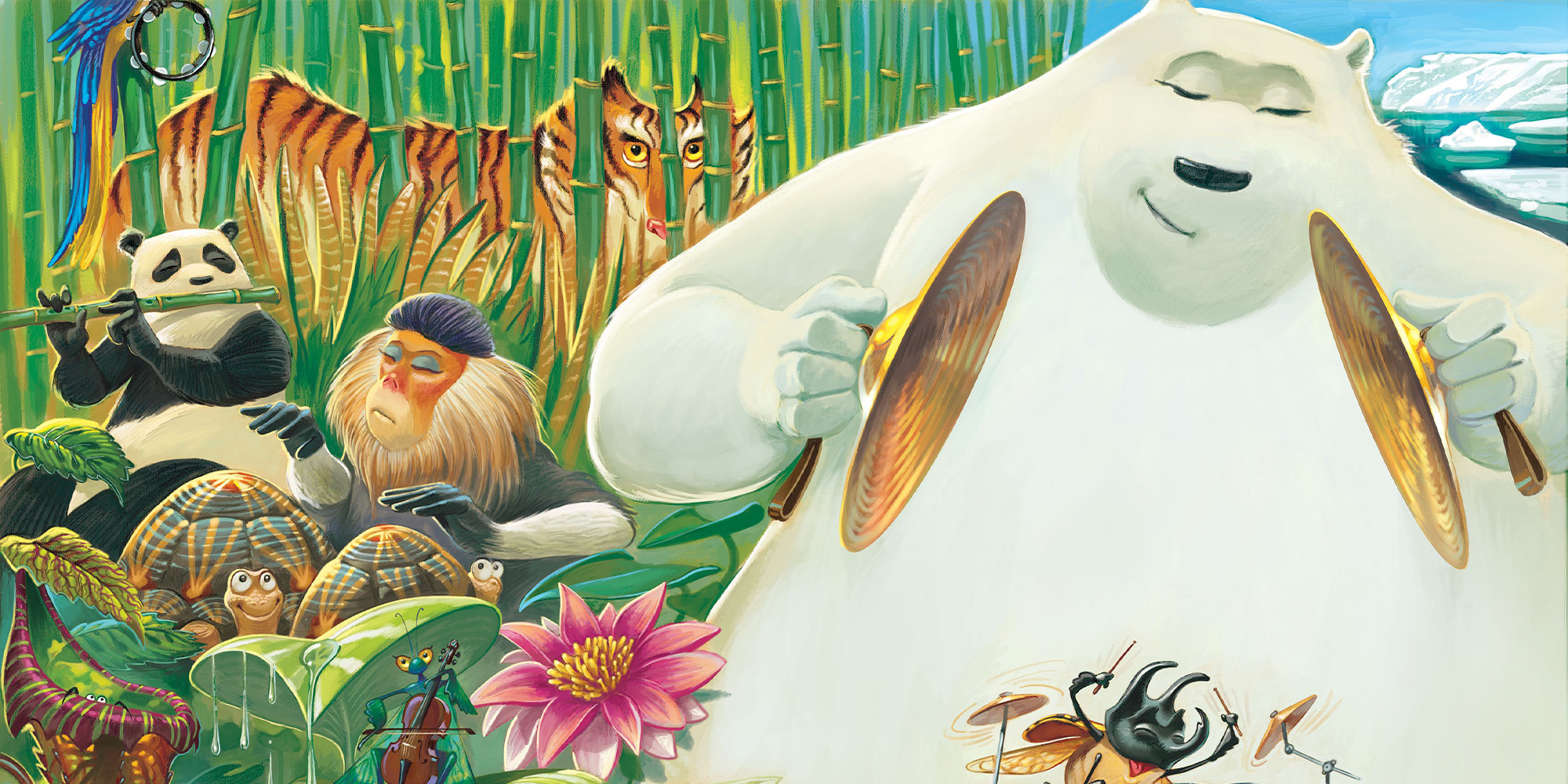What do you get when you mix a wildly imaginative picture book with a full symphony orchestra? The Fantabulous Animal Orchestra! Written and illustrated by Donovan Bixley ONZM, and set to music composer Camryn Nel, this new audiobook invites kids (and their grown-ups) into a colourful world where each animal brings a different instrument to the mix. With themes of teamwork, biodiversity and a whole lot of musical mayhem, this unique collaboration between Penguin Random House and the Auckland Philharmonia promises to be as educational as it is entertaining — and totally fantabulous. Auckland Philharmonia caught up with Donovan and Camryn to discover more about this exciting new collaboration.
What can you tell us about this upcoming collaboration with Auckland Philharmonia?
Donovan Bixley I’m a member of several bands in Taupō playing tenor saxophone and singing in a 13-piece funk band, as well as being involved in the Great Lake Big Band and I’m also president of the Taupō Concert Band … so music is a really big part of my life. The Fantabulous Animal Orchestra was inspired by my dual passions of music and the environment. When I first started working on the idea of the orchestra as a metaphor for biodiversity about 6 years ago, I remember thinking that it would make a great orchestral piece with all the animals playing the different sections, like Saint-Saëns' Carnival of the Animals or Prokofiev’s Peter and the Wolf. I can’t wait to hear the full glorious resonance of the Auckland Philharmonia playing Camryn’s score – it’s like something from my wildest dreams!
Camryn Nel I am deeply thankful to be a part of this i incredibly exciting collaboration . Besides being a composer, I am a full-time teacher, so the opportunity to write music that also has an educational aspect is very exciting. I have known Donovan for a long time, both of us having played in various ensembles together in Taupо̄. It is really cool having both our artistic paths come together in a somewhat coincidental way. This has been a really rewarding project to be a part of, and hopefully not the last.
Donovan, how has it felt seeing someone else interpret your story and illustrations through music?
DB As both author, illustrator as well as book designer my day-to-day work is really all-consumingly creative – from envisaging a project, to delivering the final product. So, this collaboration with the Auckland Philharmonia has been a real thrill. Being able to let go of that creative burden and just sit back and enjoy seeing how another artist interprets your work into a new art form. Aside from that, it’s also been amazing to be on the sidelines watching Camryn’s career over the last decade or more. We’re both from Taupō, and I can remember being the guitar tutor to Camryn and dozens of other beginner guitar pupils at a big orchestral music day. Young Camryn quickly surpassed my meagre guitar skills, and it’s just fantastic to see his development as a composer and to be part of this fantastic collaboration.
The book carries an environmental message about biodiversity — how did you approach balancing that with a playful and engaging tone for children?
DB I’ve always wanted to make work that is first and foremost entertaining. I try to create worlds that readers will fall in love with, which they’ll want to return to again and again. I hope children and adults will engage with all the expressive animal characters and the bubbling rhythm of the words. There’s also the fun look-and-find game of trying to spot who’s gone missing as each part of the orchestra drops out of the story. The addition of Camryn’s score just adds another layer of immersion that brings the whole piece to life. I like to think that children’s books are similar to getting kids to eat their veggies. After a dozen times, they’ll fall in love with it and that’s when they’ll discover the underlying message I’ve woven into the story … when they are ready … instead of having it shoved down their throat like a nagging lecture. But they’ll only discover the good stuff within if they fall in love with the book first.
Camryn, what has been the biggest creative challenge in composing music to match an existing narrative and illustrations?
CN The biggest creative challenge for this work has been writing for a gradually shrinking orchestra. In Donovan’s story, the sections of the orchestra gradually leave, eventually only leaving the brass. Often orchestral writing is built using the strings as the foundation, but this project has forced me to rethink that approach.

